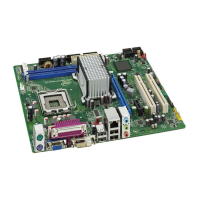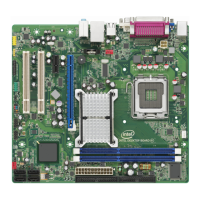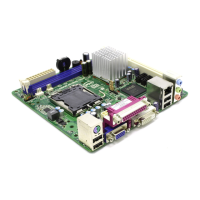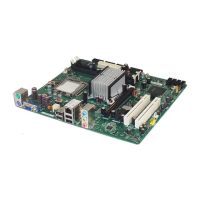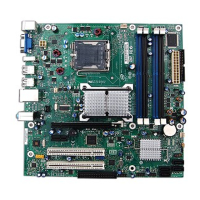Intel Desktop Board DG43RK Product Guide
20
Table 4 describes the LED states when the board is powered up and the LAN
subsystem is operating.
Table 4. LAN Connector LEDs
LED LED Color LED State Indicates
A (Link) Off LAN link is not established
Green
On LAN link is established
Blinking LAN activity is occurring
N/A Off 10 Mb/s data rate
Green On 100 Mb/s data rate
B (Speed)
Yellow On 1000 Mb/s data rate
For information about LAN software and drivers go to
http://www.intel.com/support/motherboards/desktop
Hi-Speed USB 2.0 Support
The Desktop Board supports up to 12 USB 2.0 ports (six ports routed to the back
panel and six ports routed to three internal headers) via ICH10. USB 2.0 ports are
backward compatible with USB 1.1 devices. USB 1.1 devices will function normally at
USB 1.1 speeds.
USB 2.0 support requires both an operating system and drivers that fully support
USB 2.0 transfer rates. Disabling Hi-Speed USB in the BIOS reverts all USB 2.0 ports
to USB 1.1 operation. This may be required to accommodate operating systems that
do not support USB 2.0.
ATA Support
The board includes five ATA interface connectors:
• One PATA connector that supports two devices
• Four SATA connectors that support one device each
PATA Interface
The board’s discrete PATA controller provides one bus-mastering PATA interface that is
accessible through a standard PATA (IDE) connector. The PATA interface supports the
following modes:
• Programmed I/O (PIO): the processor controls data transfer.
• 8237-style DMA: DMA offloads the processor, supporting transfer rates of up to
16 MB/s.
• Ultra DMA: DMA protocol on the ATA bus supporting host and target throttling and
transfer rates of up to 33 MB/s.

